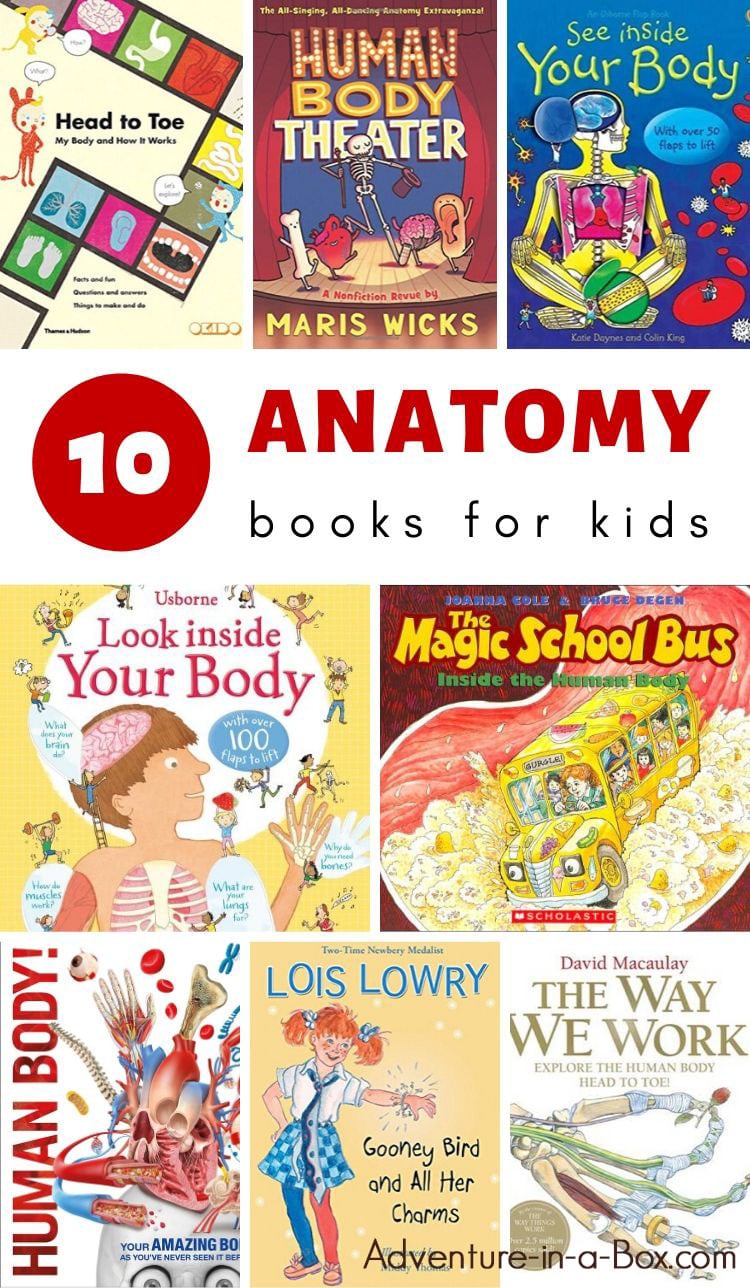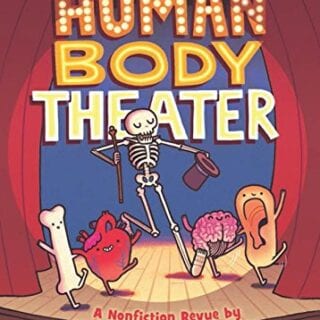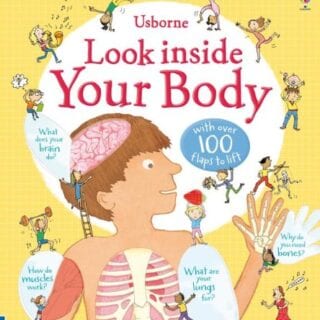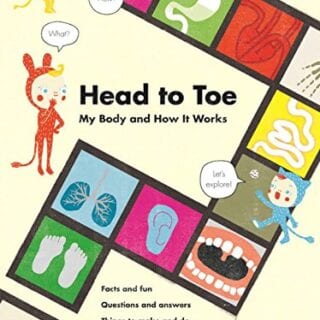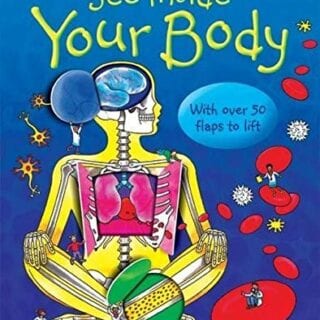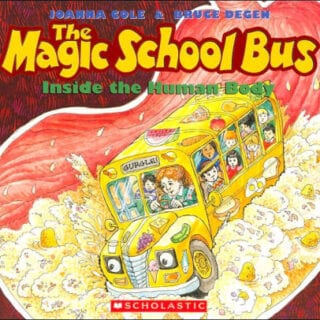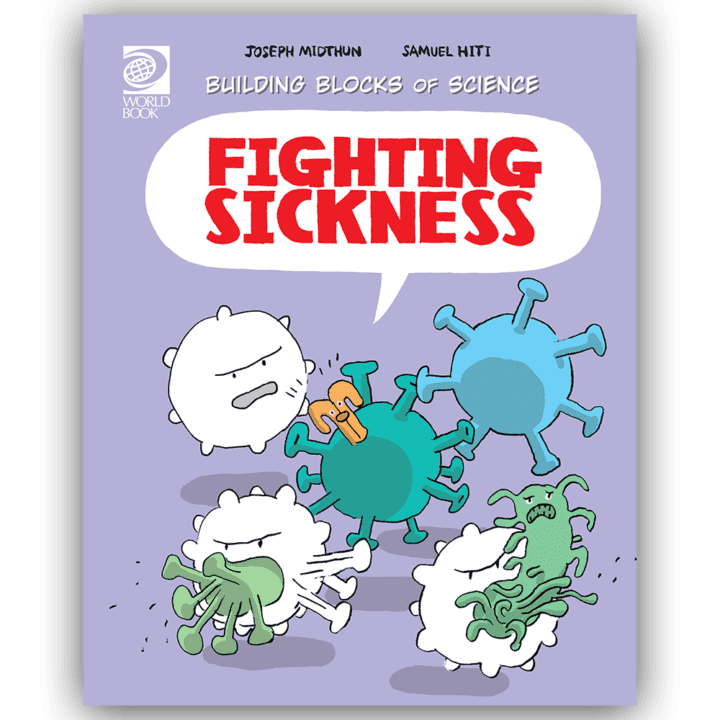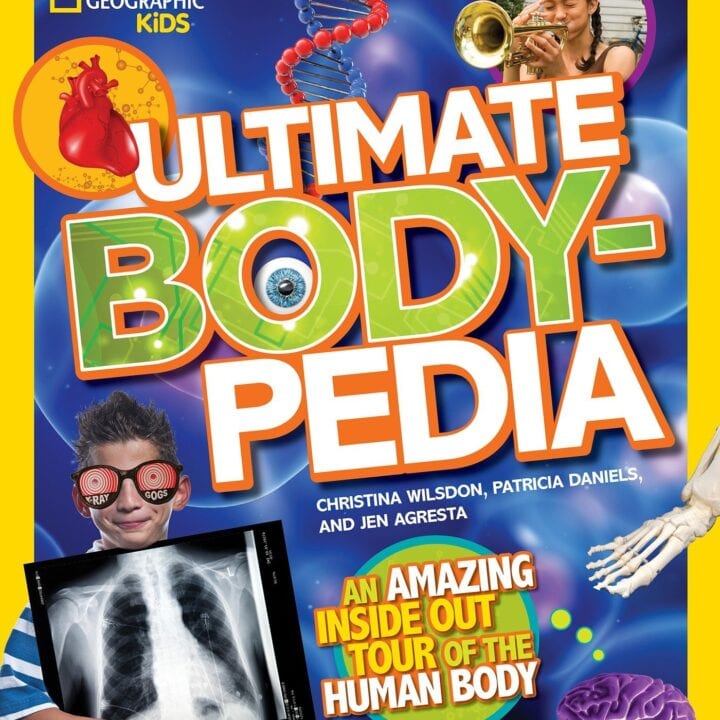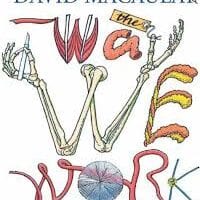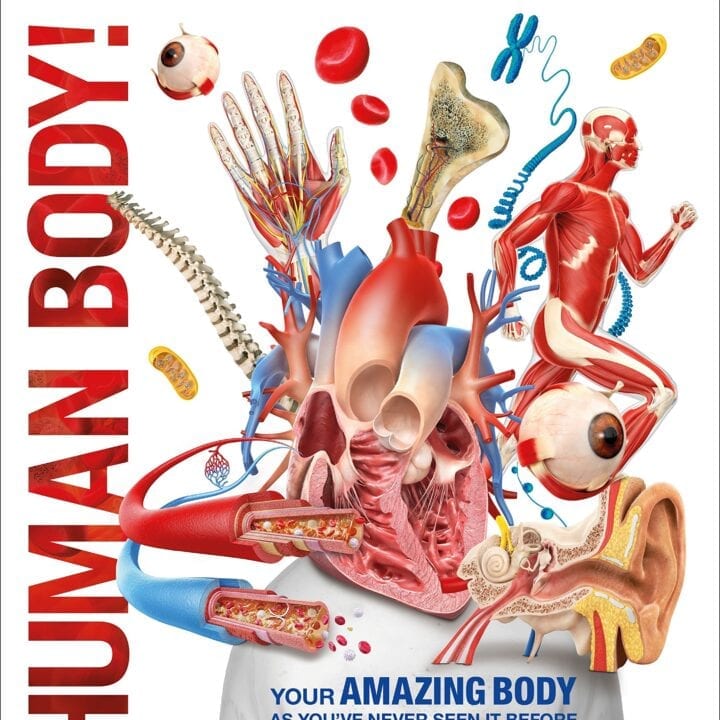Pick one of these anatomy books for kids to supplement your studies of the human body!
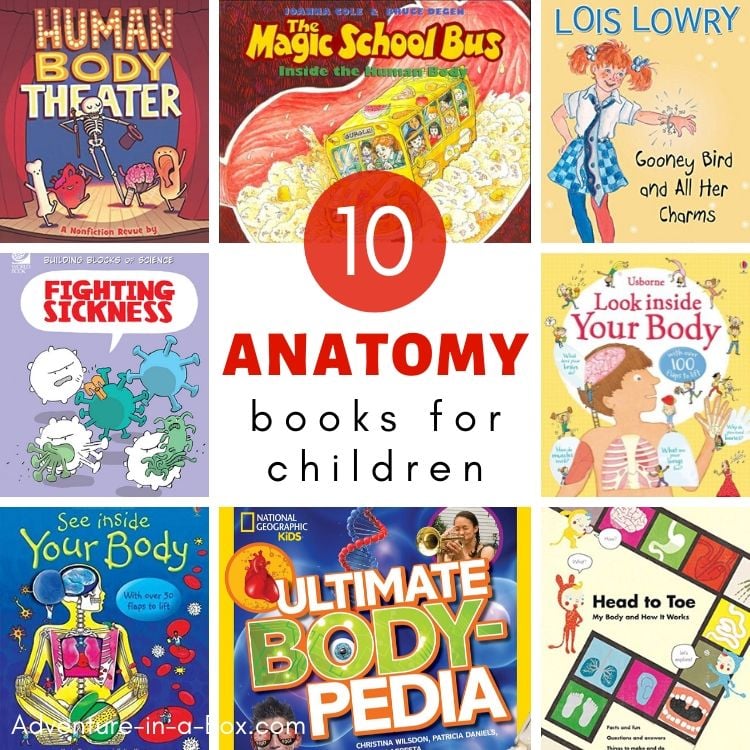
Children start asking questions about their bodies very early. A younger sibling on the way prompts, “Where do babies come from?” An argument over candies naturally leads to a discussion, “Why can’t we eat sweets all the time?” A trip to a doctor’s office encourages a bout of medical role-playing and yet more questions. And a period of interest in body noises and fluids seems to simply never go away.
In other words, human body anatomy is always a pertinent topic for kids! As a parent and educator, I decided that I might as well embrace it and use it for educational purposes.
So, every once in a while, we take time and do one of our favourite anatomy projects – play with anatomy paper dolls, build a life-size paper skeleton, or make organs out of play-dough.
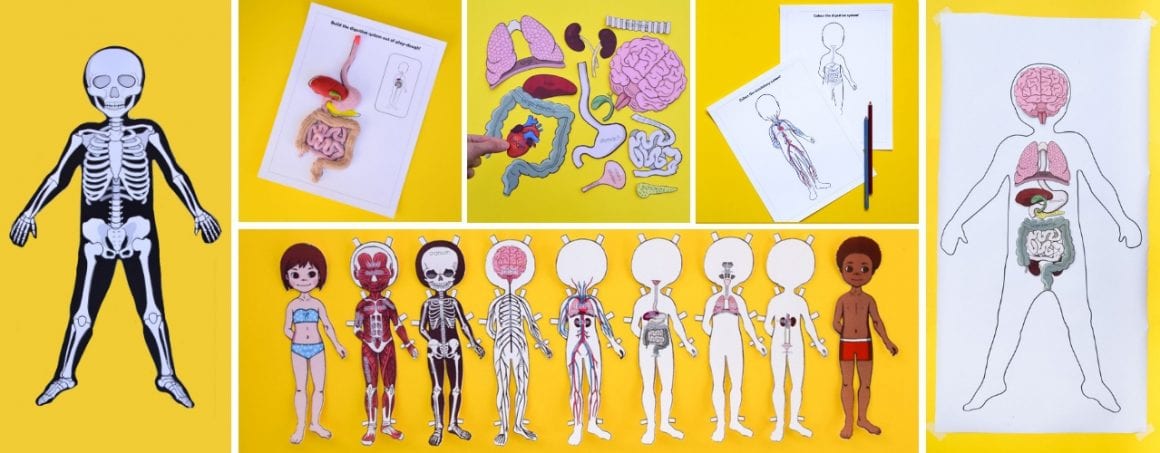
Then, we always supplement it with a reading from our collection of anatomy books for kids!
Below, we will share our favourite books about the human body for kids. Some of them are written for children as young as preschoolers and feature lift-the-flaps and hands-on activities; others are thick and full of detailed illustrations and explanations that will appeal to curious pre-teens. Pick and choose, depending on the age and the level of interest!
10 Anatomy Books for Kids
Anatomy Books for Kids
Human Body Theater: A Non-Fiction Revue, by Maris Wicks
Tonight the human body itself is putting on a show! The charming master of ceremonies starts as a skeleton, but as the evening progresses, right in front of your very own eyes, it will put on the rest of the body layers - muscles, organs, skin, and so on.
By turns, hilarious and intensely informative, it is a rare book that achieves a high standard both in educational and entertaining components. I mean, how often do you laugh while reading a textbook? You will if you go with this one. It is also written in a graphic novel form, which means - a lot of pictures, speech bubbles, and a natural appeal to everyone who likes comic books.
If there is one anatomy book you are going to read with your elementary or middle school students, this would be my suggestion. If you are a teenager or an adult interested in the subject, get it anyway - it’s that great!
Recommended age: 6+
Look Inside Your Body, by Louie Stowell
A great book for introducing the subject to younger kids. The abundance of lift-the-flaps and colourful diagrams will capture their attention while the language used for describing how the human body works will convey the information in a simple, relatable way.
Recommended age: 3-7
Head to Toe: My Body and How It Works, by Okido
Join Koko, a little girl who likes to ask questions, on a journey inside her body.
While the information presented in the book is quite basic, it is a great activity book for kids who are curious about their body. It is packed full of games and playful tasks that would engage young readers and make exploring their body a memorable occasion. My children's favourite was the game called Body Noises. You can imagine how delighted they were with a book that asked them to make such noises!
Recommended age: 3-7
See Inside Your Body, by Katie Daynes & Colin King
See Inside Your Body is a natural successor to Look Inside Your Body. It features the same level of entertainment with lift-the-flaps and fun anatomy facts, but there is much more information and far greater detail.
It offers a good overview of the subject and would satisfy the curiosity of an average elementary-aged student.
Recommended age: 5-9
Gooney Bird and All Her Charms, by Lois Lowry
Mrs. Pidgeon’s class is about to study anatomy, and what a pleasant surprise - one of the student’s relatives is willing to lend them a real skeleton for the duration of their lessons! The skeleton that promptly gets nicknamed Napoleon BonyPart becomes quite a local attraction, as the class embarks on the study of a human body.
Currently the last instalment in the series about second graders, it retains all the best features of the previous books - some educational material coupled with witty dialogues and charismatic personalities, both in teachers and students, as created by the two-time-Newbery-medal-winner Lois Lowry.
Do check out other books in the series, especially Gooney Bird Greene (about storytelling), and Gooney Bird Is So Absurd (about poetry).
Recommended age: 5-9
The Magic School Bus Inside the Human Body, by Joanna Cole
The magic school bus sure gets around - sometimes to goes to the centre of the earth, sometimes to the times of dinosaurs. This time it doesn’t go to far - just inside of the human body. There it gets digested, then travels around the circulatory system, and even gets to the brain!
While I wouldn’t recommend it as the sole book for studying human anatomy, it could be an entertaining conclusion to a study of the topic. It shows the interconnection of the systems well and offers some interesting commentary on each of them.
Recommended age: 5-9
Building Blocks of Life Science, by Joseph Midthun
This series of short comic books describes how the different body systems works. The titles include The Skeletal and Muscular System, The Circulatory System, The Digestive and Urinary System, The Nervous System, The Respiratory System, The Endocrine and Reproductive System, Cells to Organ Systems, and Fighting Sickness. All the books in the series are easy to understand, engaging, and informative.
If I had to choose between the two comic books on the list, I would go with Human Body Theatre. Nevertheless, this series also offers a good overview of the subject with a creative approach to explaining the intricacies of human body systems, so if you get your hands on it, don’t skip it!
Recommended age: 6+
Ultimate Bodypedia, by Patricia Daniels, Christina Wilsdon, Jen Agresta
If you want a detailed exploration of all the body systems together, accompanied by photos, health tips, simple experiments, and weird-but-true facts, this is a good encyclopedia to peruse.
While younger readers could still benefit from using it, I would suggest that both the language and the level of detail makes it more suitable for middle school students and older, who have already been introduced to the general idea of how human bodies work and are now looking for more information on the subject.
Recommended age: 8+
The Way We Work, by David Macaulay
The seven sections within the book take readers from the cell level to the individual systems they build. Each beautifully illustrated page explores different aspects of a human body, explaining the function of each and offering close-up glimpses, unique cross-sections and perspectives, and even a little humour along the way.
If you enjoyed The Way Things Work by this author, you should take a look at The Way We Work. It definitely has a unique approach. As the author himself writes in the introduction, "Each of us owns and inhabits an exceptional example of biological engineering and one that deserves to be understood and celebrated." Biological engineering is indeed the particular focus of this book.
Recommended age: 9+
Human Body, by DK
This guide to the human body, with computer-generated 3-D imagery, will give children a fascinating view of every part of the body from the skull to the heart and lungs to the joints and muscles.
Very informative and detailed, as all DK Smithsonian books usually are, it explores the human body to a depth that will be of interest to older children and teenagers.
Recommended age: 9+
More Anatomy Activities
Make a life-size skeleton model of a child’s body!
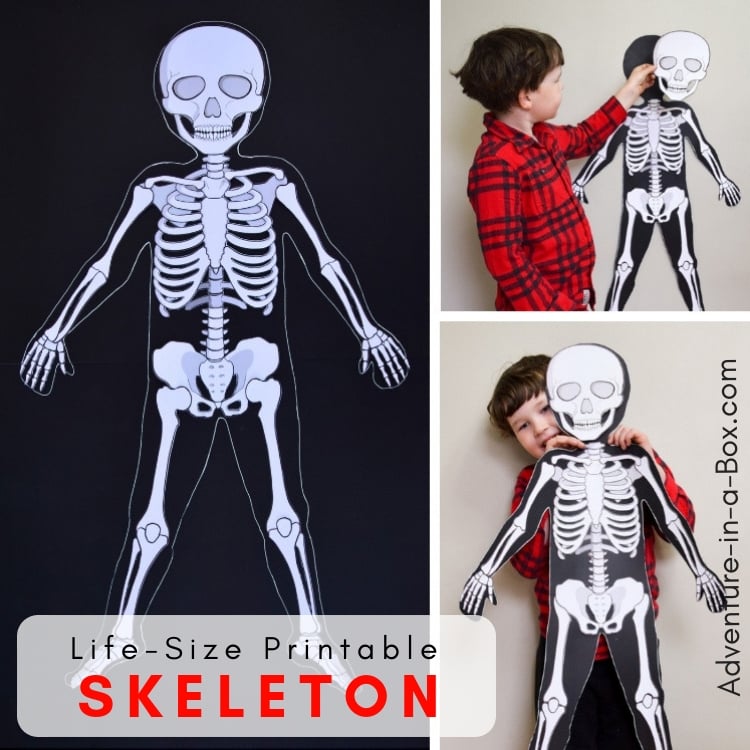
Play with anatomy paper dolls!
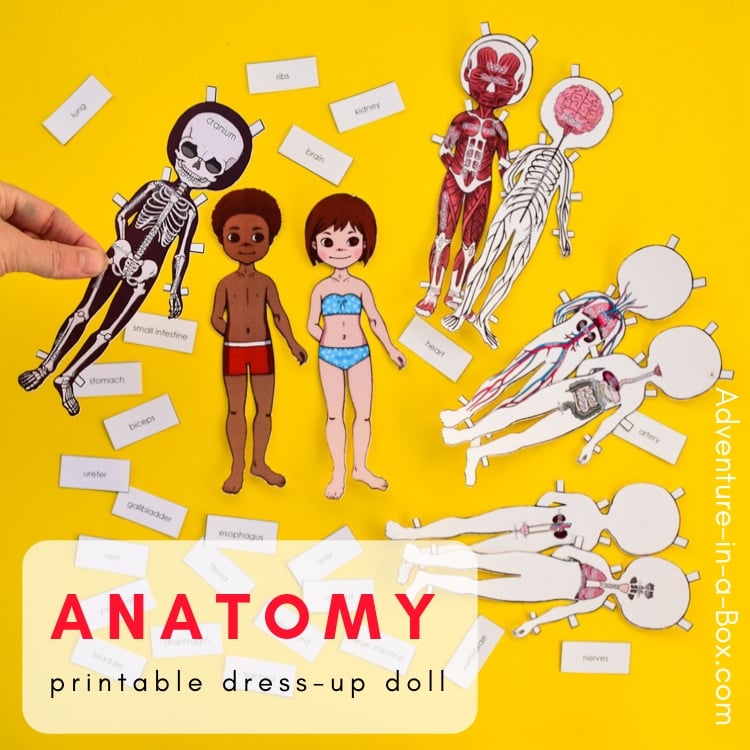
More Books Lists for Kids
50 best audiobooks for children… that adults will also love!
Best early reader comic books for kids.
